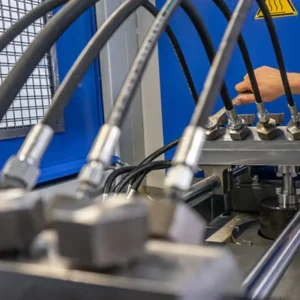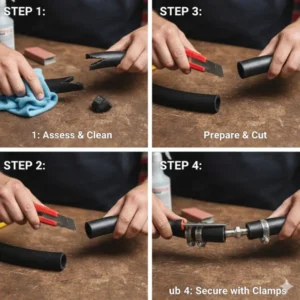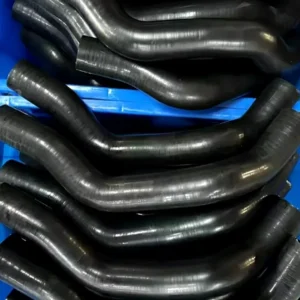Rubber hoses often become stiff, brittle, or difficult to work with, especially when they are cold or have been in storage for a long time. This lack of flexibility makes installation challenging and significantly increases the risk of the hose kinking or cracking during use.
Fortunately, you can safely restore the pliability of rubber hoses using a few simple, proven techniques. Learning how to properly soften and manipulate the rubber will save you time and money by ensuring a perfect, stress-free fit every time.
Why Need to Soften Rubber Hoses?
Softening a rubber hose is often necessary because over time, rubber can become stiff, brittle, or difficult to manipulate due to cold temperatures or aging. When rubber loses its flexibility, installation becomes much harder, and the risk of damage, such as cracking or kinking, increases significantly.
Key Reasons to Soften Rubber Hoses:
- Ease of Installation and Connection: A rigid hose is incredibly difficult to slip over barb fittings, pipe ends, or nozzles, often requiring excessive force. Softening the rubber temporarily expands the hose’s diameter and increases its pliability, making it much easier to push the hose onto a fitting for a tight, proper seal.
- Prevent Cracking and Material Damage: When stiff rubber is forced to bend sharply or is stretched over a fitting, the material’s surface tension can be exceeded. This often results in the development of micro-cracks or splits, especially near the ends, which leads to immediate leaks and drastically shortens the overall service life of the hose.
- Reduce Kinking and Flow Restriction: Stiff hoses are more prone to kinking into sharp, permanent creases when bent, leading to immediate flow blockage. A softer, more flexible hose handles curves and bends with a smoother radius, ensuring a consistent, unobstructed fluid pathway for optimal system performance.
- Restore Flexibility to Cold or Old Hoses: Rubber naturally loses flexibility in cold weather or as it ages and loses its plasticizers. Softening methods, particularly the application of controlled heat, temporarily restore the rubber’s original elastic properties, making the hose feel and perform like new again.
How to Soften a Rubber Hose?
Softening a stiff rubber hose involves safely applying heat or using specific compounds to restore its natural elasticity. These methods are crucial for easing installation onto fittings, preventing cracks, and ensuring the hose remains flexible for a smooth, reliable fluid path.
Step 1: Use the Hot Water Immersion Method
Fill a container large enough for the stiff end of the hose with very hot, but not boiling, water. Submerge the end of the hose for approximately five to ten minutes, ensuring the water level covers the section needing to be softened for the fitting.
The heat from the water permeates the rubber, temporarily making the material pliable and slightly expanding the inner diameter. Once the hose is flexible, quickly remove it and immediately push it onto the fitting before it cools and stiffens again.
Step 2: Apply a Heat Gun or Hair Dryer
For hoses that cannot be fully immersed, use a heat gun on a low setting or a high-power hair dryer. Move the heat source constantly around the entire circumference of the hose end to ensure even heating and prevent scorching or melting the rubber.
Concentrate the heat just enough until the hose feels noticeably warmer and more yielding to the touch. This method offers precise control, making it ideal for targeted softening on specific hose sections or complex, installed assemblies.
Step 3: Utilize a Steam Method
For a rapid and even softening, hold the stiff hose end carefully over the spout of a boiling kettle or a garment steamer. The moist, intense heat penetrates the rubber quickly, making the material highly flexible in less than two minutes.
Use caution to avoid steam burns and secure the hose firmly. The high heat from the steam makes the hose temporarily very soft, allowing it to be easily manipulated and slid over a tight fitting with minimal effort.
Step 4: Apply Rubber Conditioner or Lubricant
Choose a rubber-safe lubricant, such as silicone spray, glycerin, or specialized rubber conditioner. Apply a generous coating to both the outside of the hose end and the fitting itself before attempting installation, allowing a few minutes for the material to absorb it.
The conditioner or lubricant helps the material glide smoothly over the fitting, reducing friction and the risk of tearing or cracking the rubber. This method also conditions the rubber, helping to maintain its long-term flexibility and preventing future stiffness.
Step 5: Leave the Hose in Direct Sunlight
If you have ample time and the weather permits, lay the entire length of the hose out straight in a sunny spot. The hose will absorb solar energy, gently and evenly raising its internal temperature over the course of an hour or two.
This passive heating method is ideal for softening a long hose that has become uniformly stiff. The gentle warmth restores overall flexibility, making the entire hose easier to handle, coil, and deploy without kinks.
Step 6: Gently Massage and Work the Rubber
For minor stiffness, physically working the rubber can help restore pliability. Firmly yet gently squeeze and flex the stiff hose section with your hands for a few minutes, focusing on the area around the end that needs to be fitted.
This manual manipulation helps to break up any localized stiffness and restores movement to the material’s polymer chains. This method works well in combination with the application of a silicone lubricant to achieve maximum flexibility for a tight fit.
Conclusion
Successfully softening a rubber hose, whether with controlled heat or a compatible lubricant, is a valuable skill that guarantees easier installation and greatly reduces the risk of long-term damage like cracking. By restoring the hose’s natural flexibility, you ensure a tight, reliable seal and maximize the lifespan of your fluid transfer system.
Remember that while softening methods can temporarily aid installation, the overall durability and performance of your hose depend heavily on the quality of its construction and the rubber compound used. High-grade materials maintain flexibility across a broader temperature range and resist becoming brittle over time.
For the most flexible and robust rubber hoses built to perform reliably in demanding conditions, choose Gushan Rubber. We offer a wide selection of quality, wholesale rubber hoses engineered for superior pliability and durability. Contact us today to get the best wholesale rubber hoses from Gushan Rubber!




